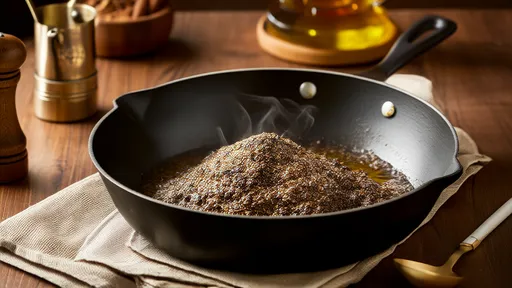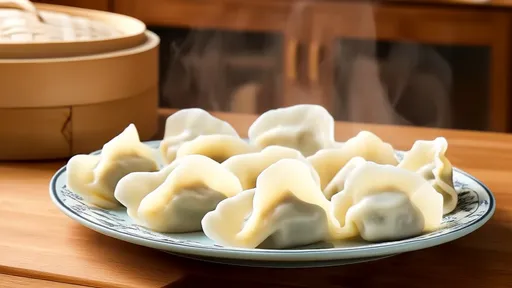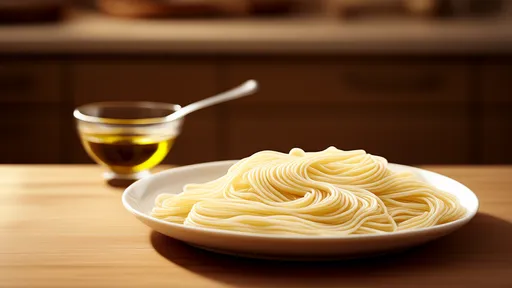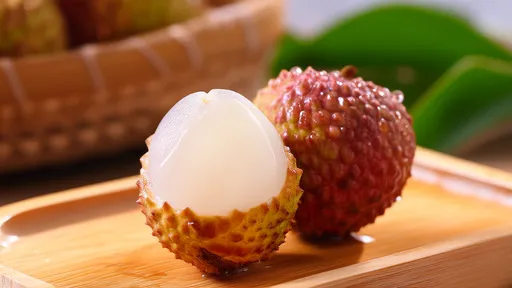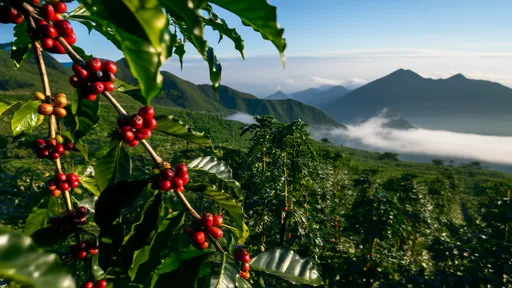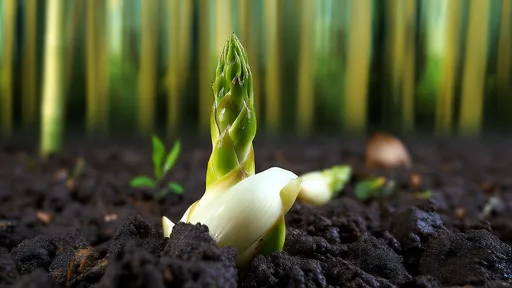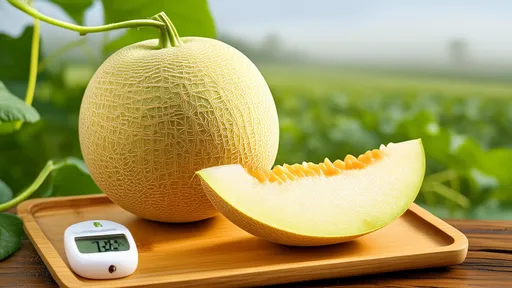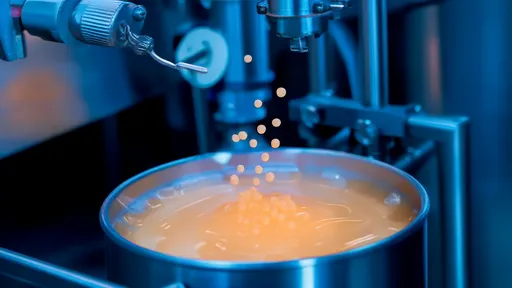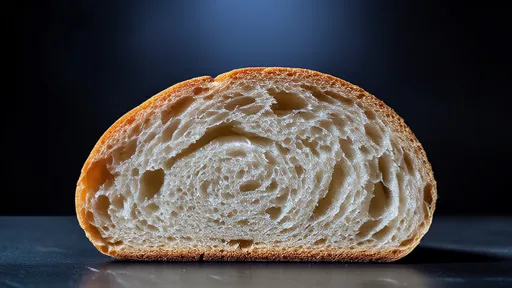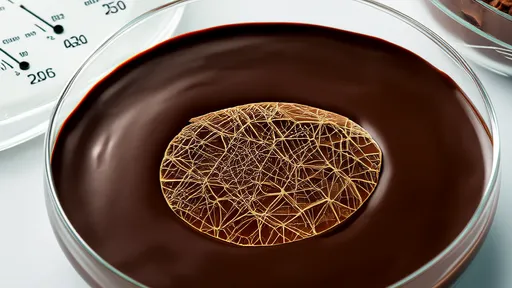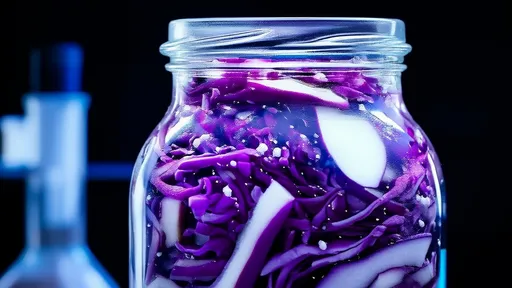The tender crunch of Zhejiang bamboo shoots has long captivated gourmets and scientists alike, their delicate texture standing as a testament to nature's perfect engineering. While chefs praise their culinary versatility, researchers have uncovered a fascinating cellular secret behind their remarkable freshness – turgor pressure. This biological phenomenon, often overlooked in discussions of vegetable quality, holds the key to understanding why these spring delicacies from China's eastern province maintain their youthful crispness long after harvest.
Bamboo shoots emerge from the earth with an almost miraculous vitality, their cells swollen with water like miniature hydraulic systems. The high turgor pressure within each cell creates that characteristic resistance to the tooth followed by instantaneous yielding that defines premium shoots. Zhejiang's unique terroir – its acidic red soil, humid climate, and particular elevation – conspires to produce bamboo shoots with cellular pressures that would make a physicist take notes. Local farmers have cultivated this knowledge for generations, though they might explain it in terms of "qi" rather than pascals.
What makes Zhejiang's varieties special isn't merely the presence of turgor pressure, but its exceptional stability post-harvest. Unlike many vegetables that rapidly lose cellular integrity after picking, these bamboo shoots possess cell walls rich in particular polysaccharides that act like nature's moisture-locking vaults. The shoots continue metabolic activities at just the right pace to maintain their cellular architecture for days, a trait that has made them prized throughout Chinese culinary history. Imperial chefs during the Song Dynasty reportedly preferred Zhejiang bamboo shoots above all others for their ability to arrive in the capital still tasting as if freshly dug.
Modern food science has begun quantifying what traditional knowledge long understood empirically. Laboratory measurements reveal that premium-grade Zhejiang bamboo shoots maintain turgor pressures exceeding 0.5 MPa – comparable to a well-inflated bicycle tire. This pressure doesn't simply create texture; it actively prevents microbial invasion by keeping cell membranes taut against potential pathogens. The shoots' famous sweetness emerges from this pressurized environment, as sugars concentrate in the cytoplasm as a natural osmotic response. Harvest timing becomes a precise science, with the ideal moment occurring when pressures peak but before significant lignification begins.
Processing methods developed over centuries further optimize these natural advantages. Traditional soaking in rice-whey water maintains electrolyte balances that modern science now recognizes as crucial for osmotic stability. The characteristic diagonal scoring seen in prepared shoots isn't merely decorative – it creates controlled stress points that allow for even expansion during cooking without sudden cell wall collapse. Even the preferred cooking vessels – unglazed earthenware pots – contribute by allowing gradual moisture exchange that maintains ideal turgor throughout the preparation process.
Climate change presents new challenges to this delicate biological balance. Rising temperatures in Zhejiang's bamboo forests have altered growth cycles, with some growers reporting narrower harvest windows to capture optimal turgor conditions. Researchers at Zhejiang University have responded by developing non-invasive pressure measurement techniques using magnetic resonance, allowing real-time monitoring of bamboo shoot quality without damaging the precious specimens. Their work has identified specific cultivars that maintain superior turgor under warmer conditions, offering hope for preserving this culinary treasure in a changing world.
The international gourmet market has taken notice of these scientific insights. Top restaurants from Paris to Tokyo now specify Zhejiang bamboo shoots in their menus, with prices reflecting both their legendary quality and the precise handling required to deliver that quality across continents. Modern logistics chains employ modified atmosphere packaging tuned to the shoots' unique respiratory needs, essentially putting them in suspended animation during transport. The result is that diners in New York can experience nearly the same cellular freshness as those in Hangzhou, a feat unimaginable just a generation ago.
Looking deeper into cellular structures reveals another marvel – the bamboo shoot's turgor pressure isn't uniform throughout its tissues. The basal portion maintains higher pressures than the tip, creating natural textural variations that skilled chefs exploit in layered preparations. Microscopy shows how vascular bundles arrange themselves in helical patterns that resist both vertical growth stresses and cooking-induced distortions. This sophisticated architecture means that even when turgor eventually declines, the shoots lose grace gradually rather than collapsing into mush like lesser vegetables.
Future applications of this knowledge extend beyond gastronomy. Materials scientists study bamboo shoot cell walls for inspiration in creating pressure-resistant biodegradable packaging. Biomedical researchers investigate how the shoots' osmotic regulation might inform better tissue preservation methods. Even the cosmetics industry has taken interest in the shoots' ability to maintain hydration under stress – several premium skincare lines now include bamboo shoot extracts as active ingredients. The humble bamboo shoot, it seems, has lessons to teach far beyond the kitchen.
For now, spring in Zhejiang remains the best time to appreciate this natural wonder at its peak. When conditions align – the right rainfall followed by sunshine, experienced harvesters selecting shoots at their pressurized prime – the resulting delicacy represents one of nature's most perfect convergences of biology and gastronomy. That first crisp bite contains not just flavor, but centuries of agricultural wisdom, cellular complexity, and ecological harmony, all expressed through the simple poetry of perfect turgor pressure.
The art of unlocking the full potential of spices lies in a time-honored technique: dry-roasting, crushing, and coaxing out their essential oils. This ancient method, passed down through generations of culinary masters, transforms ordinary spices into aromatic powerhouses that elevate dishes to extraordinary heights. The process may seem simple at first glance, but mastering it requires patience, precision, and an understanding of how heat interacts with different spice varieties.
For many home cooks and professional chefs, peeling and cutting yams can be an unexpectedly unpleasant experience. The vegetable, known for its nutritional benefits and culinary versatility, has a notorious side effect – it can leave your hands unbearably itchy. This common kitchen woe has led to numerous home remedies and old wives' tales, but one surprising solution has emerged from modern technology: the microwave.
The art of making dumplings is a cherished tradition in many cultures, particularly in Chinese cuisine. While the filling often steals the spotlight, the dough wrapper plays an equally crucial role in ensuring the dumplings hold together during cooking. One of the most effective yet underrated techniques for preventing dumpling wrappers from tearing is incorporating egg whites into the dough. This method leverages the science of proteins to create a more resilient and elastic wrapper, capable of withstanding the rigors of boiling or steaming without falling apart.
In kitchens around the world, cooks face a common nemesis when preparing pasta: sticky noodles that clump together into an unappetizing mass. While many swear by the traditional method of rinsing cooked pasta with cold water to prevent sticking, a growing number of culinary experts argue that tossing freshly boiled noodles with olive oil proves far more effective. This technique not only preserves the pasta's ideal texture but also enhances its flavor profile in ways cold water simply cannot match.
Guangdong lychee, a jewel of southern China's fruit basket, has long been celebrated for its succulent flesh and floral aroma. Beyond its irresistible taste, recent research has uncovered a hidden treasure within its vibrant red peel—polyphenols with remarkable antioxidant properties. These compounds are quietly revolutionizing our understanding of how this tropical fruit may contribute to human health far beyond basic nutrition.
The high-altitude coffee farms of Yunnan Province have long been celebrated for producing beans with a distinctive flavor profile. Among the many factors influencing taste, altitude plays a particularly crucial role, especially when it comes to acidity. Unlike the bright, sharp acidity often associated with African coffees, Yunnan’s beans exhibit a more nuanced relationship between elevation and tartness—one that defies simple expectations.
The tender crunch of Zhejiang bamboo shoots has long captivated gourmets and scientists alike, their delicate texture standing as a testament to nature's perfect engineering. While chefs praise their culinary versatility, researchers have uncovered a fascinating cellular secret behind their remarkable freshness – turgor pressure. This biological phenomenon, often overlooked in discussions of vegetable quality, holds the key to understanding why these spring delicacies from China's eastern province maintain their youthful crispness long after harvest.
The Hami melon, a jewel of Xinjiang's agricultural bounty, owes its legendary sweetness to a climatic phenomenon as ancient as the Silk Road itself. Nestled in the arid embrace of China's northwest, this golden-fleshed fruit has thrived for centuries under skies that scorch by day and chill by night. What appears as hardship to most crops becomes the secret alchemy transforming ordinary melons into saccharine masterpieces.
The vast fields of Northeast China, stretching across latitudes from 40°N to 50°N, have long been celebrated as the heartland of soybean production. Among the many factors influencing soybean quality, protein content stands out as a critical metric, not just for nutritional value but also for industrial applications. Recent studies have unveiled a fascinating pattern: the protein content in Northeast soybeans exhibits significant variation along latitudinal gradients. This discovery has sparked renewed interest in understanding how geography shapes the very fabric of this agricultural staple.
The process of homogenization in ice cream mix preparation plays a pivotal role in achieving the desired texture, stability, and mouthfeel of the final product. At the heart of this process lies the principle of fat emulsification, where milk fat globules are broken down into smaller, more uniform particles. This not only enhances the emulsion's stability but also ensures a smoother consistency in the ice cream. The science behind homogenization parameters is both intricate and fascinating, as it directly influences the quality of the end product.
The phenomenon of bread staling has puzzled bakers and food scientists for generations. While most consumers associate staleness with dryness, the underlying mechanisms involve complex interactions between starch retrogradation and water migration within the bread matrix. This intricate dance between moisture and crystalline structures ultimately determines whether your morning toast will delight or disappoint.
The formation of rock sugar crystals is a fascinating interplay of chemistry and physics, where the delicate balance of supersaturation dictates the birth and growth of crystalline structures. At its core, this process hinges on the creation of nucleation sites—tiny clusters of molecules that serve as the foundation for larger crystals. The journey from syrup to shimmering rock sugar is anything but straightforward, and understanding the factors that influence nucleation can unlock greater control over crystal size, clarity, and yield.
The art of chocolate tempering is a delicate dance of temperature control, one that hinges on the precise crystallization of cocoa butter. This process is not merely a technical step in chocolate production; it is the very heart of what gives chocolate its signature snap, glossy sheen, and melt-in-the-mouth texture. Without proper tempering, chocolate can appear dull, develop a grainy texture, or fail to release cleanly from molds. The secret lies in understanding how cocoa butter behaves under varying thermal conditions.
The science behind pickling vegetables has fascinated food chemists and home cooks alike for centuries. While the process may seem straightforward – submerging vegetables in brine – the molecular dance occurring within each cell reveals a complex interplay of chemistry and physics. Recent advances in sodium ion detection techniques have allowed researchers to map the distribution of salt throughout pickled vegetables with unprecedented precision, shedding new light on this ancient preservation method.
The phenomenon of "wine legs" or "tears of wine" has captivated drinkers and scientists alike for centuries. When a glass of wine or spirit is swirled, droplets form on the inside of the glass, creating mesmerizing streaks that slowly trickle back down. This elegant display isn’t just a sign of a good drink—it’s a fascinating interplay of fluid dynamics, surface tension, and evaporation.
